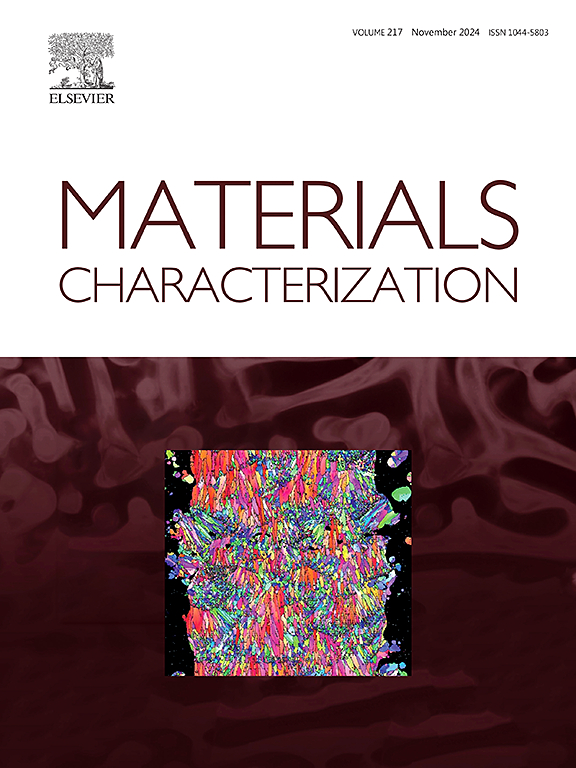Dissolution wetting of liquid copper on steel substrate – phenomena occurring during liquid-solid interaction
IF 4.8
2区 材料科学
Q1 MATERIALS SCIENCE, CHARACTERIZATION & TESTING
引用次数: 0
Abstract
The present study is focused on the detailed characterization of morphology, microstructure, chemical and phase analysis of the Cu/steel interface zone obtained as a result of the wetting tests using the sessile drop method. The methodology involved contact heating of a copper piece placed on a highly deformed steel substrate at 1130 °C in an argon atmosphere. The experiment was supported with molecular dynamics simulations on early stages of Cu/Fe contact at high temperature. Plastic deformation of a P265GH steel substrate was caused by the explosive welding, which took place prior to the wetting. The experiments revealed that after 40 s, the wetting angle reached a value of 10°, which did not change until the end of the test. This confirms the very good and fast wetting of the steel substrate by liquid copper. Atomistic simulations stay in agreement with the experiment revealing very rapid wetting. Microstructural observations of the Cu/steel couples using electron microscopy techniques showed a high-quality interface, without any voids or cracks. After the wetting experiment, the weighted average of ferrite grain size of the steel substrate (38 μm) did not change. The microscopy observations indicated that the copper diffused into the substrate along the grain boundaries of the steel, causing the Fe-based grains to separate and move towards the copper drop area. This all confirmed that the effective and fast dissolution wetting mechanism takes place during liquid Cu-steel interaction.
求助全文
约1分钟内获得全文
求助全文
来源期刊

Materials Characterization
工程技术-材料科学:表征与测试
CiteScore
7.60
自引率
8.50%
发文量
746
审稿时长
36 days
期刊介绍:
Materials Characterization features original articles and state-of-the-art reviews on theoretical and practical aspects of the structure and behaviour of materials.
The Journal focuses on all characterization techniques, including all forms of microscopy (light, electron, acoustic, etc.,) and analysis (especially microanalysis and surface analytical techniques). Developments in both this wide range of techniques and their application to the quantification of the microstructure of materials are essential facets of the Journal.
The Journal provides the Materials Scientist/Engineer with up-to-date information on many types of materials with an underlying theme of explaining the behavior of materials using novel approaches. Materials covered by the journal include:
Metals & Alloys
Ceramics
Nanomaterials
Biomedical materials
Optical materials
Composites
Natural Materials.
 求助内容:
求助内容: 应助结果提醒方式:
应助结果提醒方式:


